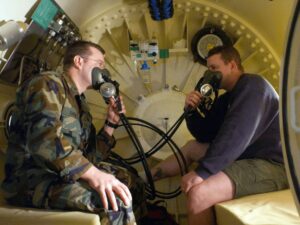1. Understanding Decompression Chambers
Decompression chambers, also known as hyperbaric oxygen therapy (HBOT) units, are essential in both medical and various non-medical fields. Demonstrating their growing significance, a report from grandviewresearch indicates that the global market for these devices was estimated at USD 3.3 billion in 2022, with expectations of continued growth from 2023 to 2030.
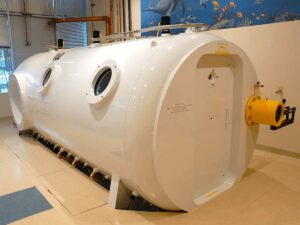
By creating a high-pressure environment, these chambers are revolutionizing treatment methods. Essentially, these chambers work by providing an environment where air pressure can be increased to levels higher than normal atmospheric pressure.
This unique feature allows for the administration of pure oxygen, which is absorbed at a much higher rate under these conditions. Increased oxygen absorption in decompression chambers is not only crucial for treating decompression sickness but also aids in recovery from poisoning, highlighting their multifaceted utility.
2. How Decompression Chambers Work
Building upon the understanding of decompression chambers, the next section will detail the process behind their functioning. To fully appreciate the value of decompression chambers, it’s important to understand their underlying mechanics. Here are some key aspects to focus on:
-
Pressure Increase: Decompression chambers are designed to increase air pressure up to three times higher than normal atmospheric levels. This heightened pressure is the core of their functionality.
-
Oxygen Enrichment: Inside the chamber, patients breathe in pure oxygen, which is more effective under increased pressure. This high oxygen level is key to the chamber’s healing properties.
-
Safety Protocols: Chambers are equipped with safety measures to regulate pressure and oxygen levels, ensuring a controlled and secure environment for patients.
-
Body’s Response: Under these conditions, the body can absorb more oxygen into the blood. This extra oxygen can help heal tissues and fight infection faster.
-
Diverse Applications: From treating scuba divers with decompression sickness to aiding athletes’ recovery, decompression chambers have a wide range of uses. For example, a diver suffering from decompression sickness can experience significant improvement after just one session in the chamber.
3. Types of Decompression Chambers
Having explained the functioning of decompression chambers, the article will next discuss the different types of decompression chambers and their unique features. Let’s take a look at the different types:
Monoplace Chambers
Monoplace chambers are designed for individual use, typically found in hospitals and private clinics. These units treat one patient at a time, enclosing them in a tube-like structure where they breathe 100% oxygen. The simplicity of monoplace chambers makes them a popular choice for treating conditions like diabetic foot ulcers and certain types of infections.
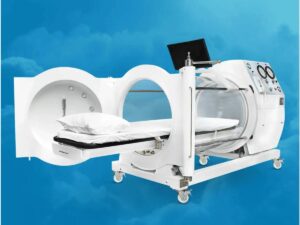
Multiplace Chambers
Multiplace chambers, larger in size, can accommodate multiple patients simultaneously. These are often found in larger medical facilities, diving operations, and even maritime settings. Patients in these chambers breathe oxygen through masks or hoods, while the chamber itself is pressurized with normal air. This setup allows for medical staff to accompany patients inside, providing immediate care and monitoring.
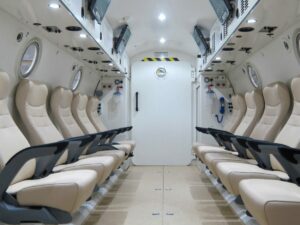
Portable Chambers
Portable chambers are designed for mobility and can be used in various locations, including remote sites. They are particularly useful in situations where patients need to be moved or when accessibility to a fixed chamber is not feasible. These chambers provide the flexibility needed in field operations, sports events, or remote medical interventions.
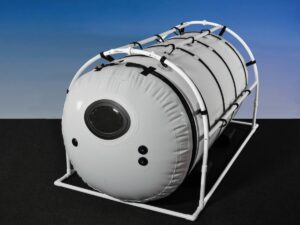
4. Applications of Decompression Chambers
Following the overview of decompression chamber types, the next topic will delve into the wide range of their practical applications. Here are some of the key areas where these chambers are making a significant impact:
Medical Treatment
In the medical field, decompression chambers are primarily used for hyperbaric oxygen therapy (HBOT). This therapy is effective in treating conditions like carbon monoxide poisoning, decompression sickness, and chronic wounds like diabetic foot ulcers. By increasing oxygen levels in the bloodstream, these chambers accelerate the healing process and improve infection control.
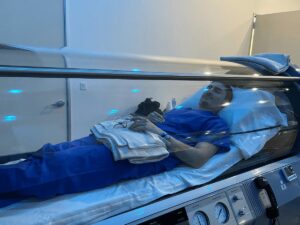
Sports and Rehabilitation
Decompression chambers are also extensively used in sports and rehabilitation centers. Athletes use these chambers for faster recovery from injuries and to reduce fatigue. The increased oxygen levels help in quicker tissue repair and muscle recovery, which is crucial for athletes’ performance and well-being. Sports teams and rehabilitation centers have integrated these chambers into their recovery protocols.
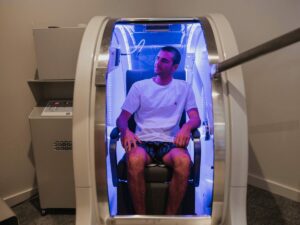
Maritime and Diving Operations
In maritime and diving operations, decompression chambers are essential for the safety of divers. These chambers are used to treat decompression sickness, a risk associated with deep-sea diving. They are also employed in offshore drilling operations for similar purposes. OxygenArk offers specialized chambers for maritime and diving, ensuring quick treatment for divers and improved safety in deep-sea activities.
5. Technological Advancements in Decompression Chambers
After discussing how decompression chambers are used, the focus will shift to recent technological advancements in these chambers. Let’s explore some key developments that have reshaped the landscape of hyperbaric therapy:
Enhanced Safety Features: Modern decompression chambers are equipped with advanced safety systems, including automated pressure control and emergency shut-off mechanisms. These improvements greatly reduce the risk of accidents and ensure patient safety during treatments.
Improved Patient Comfort: Recent designs focus on patient comfort, featuring larger windows, integrated entertainment systems, and more spacious interiors. This makes the experience less claustrophobic and more pleasant for patients undergoing long sessions.
Advanced Monitoring Systems: The integration of state-of-the-art monitoring systems allows for real-time tracking of patient vitals and chamber conditions. This ensures precise control over the therapy process and enhances the overall treatment effectiveness.
Portable Designs: These chambers are designed for easy transportation and quick setup, broadening the reach of this crucial therapy. Brands like OxygenArk’s development of portable decompression chambers has transformed hyperbaric therapy, making it readily available in remote areas and urgent situations.
Customizable Treatment Protocols: Advanced software systems enable customized treatment protocols, tailoring the therapy to individual patient needs. This personalization leads to more effective treatments and better outcomes.
|
Technological Advancement
|
Description
|
|
Enhanced Safety Features
|
Modern decompression chambers feature automated pressure control and emergency shut-off mechanisms, significantly reducing the risk of accidents and ensuring patient safety.
|
|
Improved Patient Comfort
|
Recent designs prioritize patient comfort with larger windows, integrated entertainment systems, and spacious interiors, creating a less claustrophobic and more pleasant experience.
|
|
Advanced Monitoring Systems
|
State-of-the-art monitoring systems allow real-time tracking of patient vitals and chamber conditions, ensuring precise control over therapy processes and enhancing overall treatment effectiveness.
|
|
Portable Designs
|
Portable decompression chambers, exemplified by OxygenArk’s development, enable easy transportation and quick setup. This innovation expands the availability of hyperbaric therapy to remote areas and urgent situations.
|
|
Customizable Treatment Protocols
|
Advanced software systems enable the customization of treatment protocols, tailoring therapy to individual patient needs for more effective treatments and improved outcomes.
|
6. Safety Protocols and Operational Guidelines
Building on the technological progress in decompression chambers, the next topic addresses the crucial safety protocols and operational guidelines for their use. Let’s delve into some areas to consider for ensuring safe and effective operations:
Regular Maintenance and Checks
Routine maintenance and thorough checks are crucial for the smooth operation of decompression chambers. This involves regular inspection of the chamber’s structural integrity, air filters, and pressure systems. Ensuring that all components function correctly minimizes the risk of malfunctions or accidents during treatments.
Training for Operators
Operators of decompression chambers must undergo comprehensive training. This training covers not only the basic operation of the chamber but also emergency procedures, patient monitoring, and understanding the distinction of hyperbaric therapy. Competent operation ensures the safety of patients and maximizes the effectiveness of treatments.

Safety Protocols for Patients
Safety protocols are also established for patients undergoing treatment in chambers. These include pre-treatment health screenings to ensure suitability for hbot, guidelines on what to wear during treatment to avoid static electricity, and instructions on communication while inside the chamber. For example, patients are usually advised to wear 100% cotton clothing to prevent static sparks in the high-oxygen environment.

Conclusion
Decompression chambers are advanced medical devices designed for hyperbaric oxygen therapy and emergency treatments. This comprehensive guide offers a clear understanding of decompression chambers, it’s a valuable resource for organizations looking to integrate this technology effectively and safely.
For those interested in exploring hyperbaric solutions, OxygenArk provides state-of-the-art decompression chambers suited for a variety of needs. For further information, feel free to contact us.






